|
S |
M |
T |
W |
T |
F |
S |
|
|
1
|
2
|
3
|
4
|
5
|
6
|
|
7
|
8
|
9
|
10
|
11
|
12
|
13
|
|
14
|
15
|
16
|
17
|
18
|
19
|
20
|
|
21
|
22
|
23
|
24
|
25
|
26
|
27
|
|
28
|
29
|
30
|
31
|
|
|
|
|
|
Forums10
Topics39,639
Posts563,659
Members14,602
| |
Most Online9,918
Jul 28th, 2025
|
|
|
|
Joined: May 2008
Posts: 8,158 Likes: 114
Sidelock
|
OP

Sidelock
Joined: May 2008
Posts: 8,158 Likes: 114 |
Cabela's in Richfield has a 1903 at $1500 with the warning- Not Safe To Shoot- apparently some early 1903's had faulty receivers that might crack, due to improper heat treatment. Was this just at Springfield, or also at Rock Island and Eddystone Arsenals? What steps were taken to prevent failures with the 1903's-- was this solved before the cheaper 1903-A3 came along? RWTF
"The field is the touchstone of the man"..
|
|
|
|
|
Joined: Sep 2008
Posts: 141
Sidelock
|

Sidelock
Joined: Sep 2008
Posts: 141 |
The danger of shooting the low number 1903's is the subject of lengthy and heated debate any time it comes up. Some of the low numbers had receivers that were "burned" in the heat treating process. This would make them brittle and subject to failing in case of an obstruction in the bore or ruptured cartridge case. There is no test to determine whether the receiver is burned that does not destroy the receiver. When you have a lot of time, do a search for "low number 1903 Springfields" on the gun discussion forums and you will find many posts to read. The low number receivers were numbered 285,506 and lower from Rock Island Arsenal and lower than approximately 800,000 from Springfield Armory.
|
|
|
|
|
Joined: May 2008
Posts: 8,158 Likes: 114
Sidelock
|
OP

Sidelock
Joined: May 2008
Posts: 8,158 Likes: 114 |
Thanks Herschel-- I dug out my copy of the Wayne VanZwoll book on BA rifles and his 8 page chapter on the 1903 and 1903A3 confirmed what you said 100%--RWTF
"The field is the touchstone of the man"..
|
|
|
|
|
Joined: Jul 2012
Posts: 4,959 Likes: 348
Sidelock
|

Sidelock
Joined: Jul 2012
Posts: 4,959 Likes: 348 |
It is my understanding,after 50+ years of reading American Rifleman that the problem was "single heat treatment" of the steel.I also believe that they were inspected over the years and with bolts replaced by double heat treated ones were deemed serviceable with normal ammo.There is no question that double heat treated and nickel steel is better.The question is whether low number Springfields should be used at all,or simply used with care.Most of the concern came about when thousands of Springfields were being bought from DCM and being converted to 308 Norma,300 Win.,etc.We are mostly finished with this,and I vote for careful use with proper ammo.I would defer to Mike or Joe's opinion,after their considerable study of Springfield Sporters,some of which were made with low number recievers.
Mike
|
|
|
|
|
Joined: Apr 2006
Posts: 641 Likes: 2
Sidelock
|

Sidelock
Joined: Apr 2006
Posts: 641 Likes: 2 |
Was this just at Springfield, or also at Rock Island and Eddystone Arsenals? What steps were taken to prevent failures with the 1903's-- was this solved before the cheaper 1903-A3 came along? RWTF The problem was with the heat treating furnaces and the "experts" who operated them. In the absence of measuring devices, the heat of the receivers in the furnace was judged by appearance, that is, by the color the metal turned at certain temperatures. When measuring devices were finally installed, it became evident that on sunny days the receivers were heated to a much higher temperature than on cloudy days, when the color of the glowing receiver was easier to judge. As a result of this test, not only were instruments installed in the furnaces, but a whole new procedure, called "double heat treatment" was adopted, which resulted in probably the strongest of all Springfield actions. Even later, after serial number 1,276,767 (if I recall correctly) the steel in the receivers was changed from carbon to nickle steel, resulting in an action which was as strong, but "stickier", lacking the surface hardning. All 03A3's were made of the improved steel. According to General Hatcher, in "Hatcher's Notebook", receivers which had been "burned" by overheating could not possibly be salvaged by re-heat treating. Incidentally, Springfields were never manufactured at Eddystone, only M1917 Enfields.
|
|
|
|
|
Joined: Dec 2001
Posts: 6,881
Sidelock
|

Sidelock
Joined: Dec 2001
Posts: 6,881 |
A subject were there is so much information that one has trouble sorting out fact from fiction. Much has been repeated, changed, repeated until it's all taken as gospel regardless on which side you favor.
I am as guilty as the next person and if I could have a do-over I might not publish anything about the low-numbered 1903's.
Today I believe that about everything I have read on the subject is suspect.
Most discussions on this subject soon turn ugly and became personal. I tested five (5) low-number 1903's with annealed primer pockets, cut cases so they would fail and wrote about it on another forum. What followed was personal emails telling me how I would be responsible for all the people who would be hurt or killed with low-number rifles.
The reason I started researching the subject was because both Springfield Armory and Rock Island Arsenal both started selling rifles to civilians in 1910-1917 and they were made into sporters by the thousands.
I have, or have read, most of the shooting press of the day and there was not a single report of SPORTER blowing up. Same with the Sedgleys not a one. How can that be?
MP Sadly Deceased as of 2/17/2014
|
|
|
|
|
Joined: Sep 2008
Posts: 1,153
Sidelock
|

Sidelock
Joined: Sep 2008
Posts: 1,153 |
I have, or have read, most of the shooting press of the day and there was not a single report of SPORTER blowing up. Same with the Sedgleys not a one. How can that be? IMO 2 reasons: The average soldier can tear up an anvil with a rubber hammer, and The military accident investigations of the time frequently didn't discover or include the prevalence of soldiers' use of greased ammo in one form or another whether accidentally or on purpose. Regards, Joe
You can lead a man to logic but you can't make him think. NRA Life since 1976. God bless America!
|
|
|
|
|
Joined: Apr 2006
Posts: 641 Likes: 2
Sidelock
|

Sidelock
Joined: Apr 2006
Posts: 641 Likes: 2 |
One of the aspects of this issue is the fact that gun makers like Griffin & Howe and Sedgely often removed the serial numbers from the receiver rings of rifles they built using Springfield actions. Most G&H Springfields I have owned or examined were evidently made from arsenal made Springfield sporters, then available to NRA members, which have a slightly different barrel profile and no provision for a rear sight on the barrel. All arsenal manufactured Springfield sporters are high numbered. Sedgely claimed to have a technique of re-heat treating low numbered receivers. As pointed out above, General Hatcher, who was in a position to know, wrote that "burned" receivers could not be successfully re-heat treated. However, determining whether a particular action is properly heat treated is simple, if the action is to be drilled and tapped. Correctly heat treated Springfields, like Krags, will have a hard outer surface and a softer inner area. If the receiver is hard all the way through, then very likely it will be brittle. My Wundhammer Springfield is by definition low numbered, since all Wundhammer Springfield sporters were made before the heat treating process was changed following World War I. I have no hesitation about shoooting either it or my other low numbered Springfield, since both are fitted with Lyman 48 rear sights, and had to be drilled and tapped in the process. However, my 7mm Remington Magnum, .375 Chatfield-Taylor and .458 Winchester Magnum Springfield sporters all feature double heat treated actions. .458 Winchester Magnum 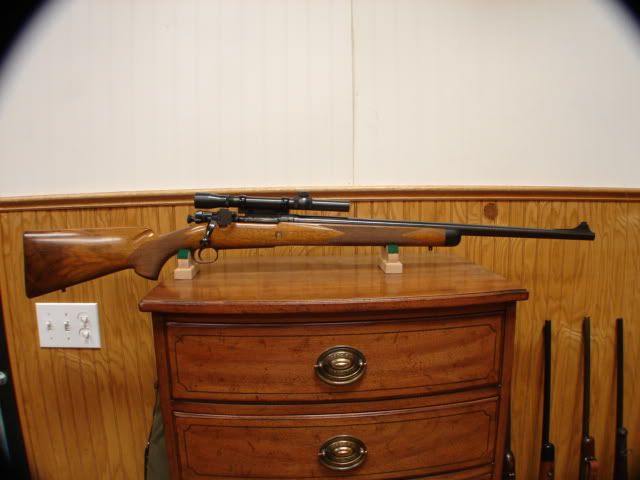 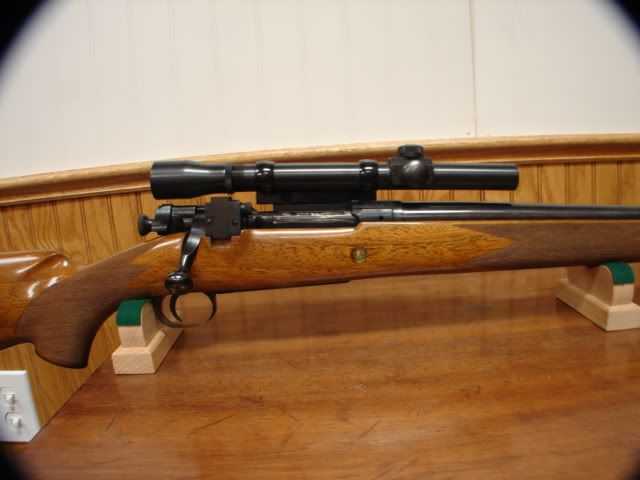 .375 Chatfield-Taylor (.375-.338) 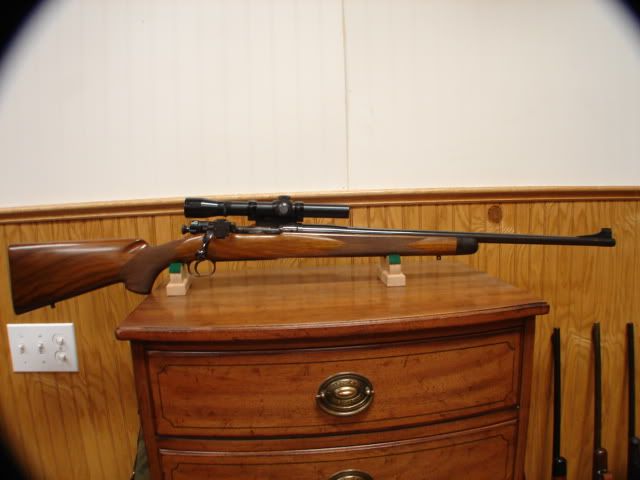 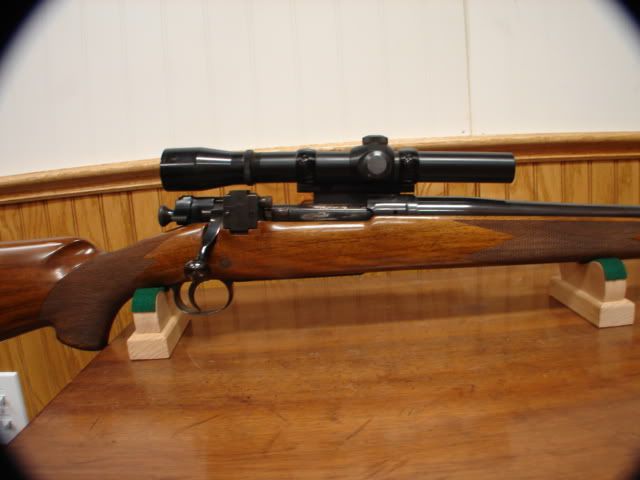 7mm Remington Magnum 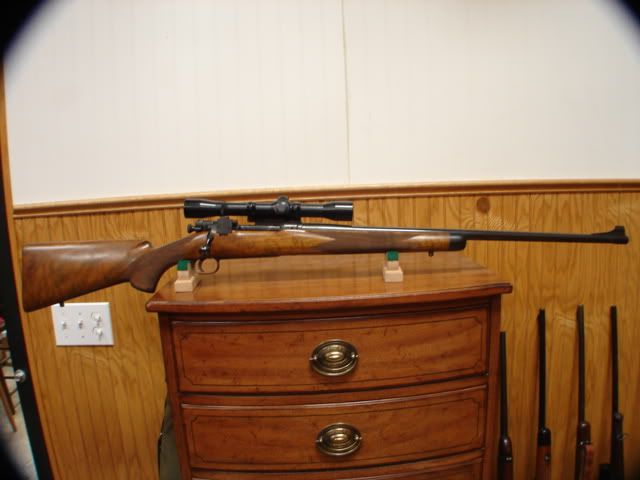 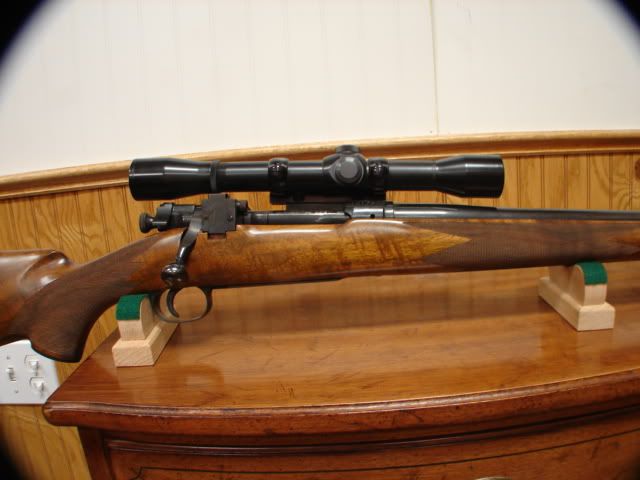
|
|
|
|
|
Joined: Sep 2008
Posts: 422 Likes: 1
Sidelock
|

Sidelock
Joined: Sep 2008
Posts: 422 Likes: 1 |
The military carefully documented a large number of failures. Many were associated with WW1-manufactured military ammunition, particularly that made by (IIRC) National Lead Company and subsidiaries. I believe the stuff had an "H" or two in the headstamps, plus a 2-digit year code (17, 18 or 19). The military supposedly took all that stuff out to sea for deep-water disposal, but that did not happen. (A couple of years back, some showed up at our "open to the public" range.)
Another source of failure was the use of German 7.92 military ammo in Springfields. Failures attributed to German military ammo were not limited to low-number 03s. Winchester 95 rifles in 30-06 also failed. That is one of the reasons that Winchester dropped that caliber in the 95.
If someone spent considerable cash or effort turning a military 03 into a nice sporter, that implies (at least to me) that the guy did not need to resort to military surplus ammo. There was much written in the sporting press of those days about the desirability of using "fresh" ammunition.
|
|
|
|
|
Joined: Jul 2012
Posts: 4,959 Likes: 348
Sidelock
|

Sidelock
Joined: Jul 2012
Posts: 4,959 Likes: 348 |
Joe's comment about greased ammo is well taken, there is an article in a fairly recent Gun Digest, which includes a photo of a blown up rifle.
Mike
|
|
|
|
|